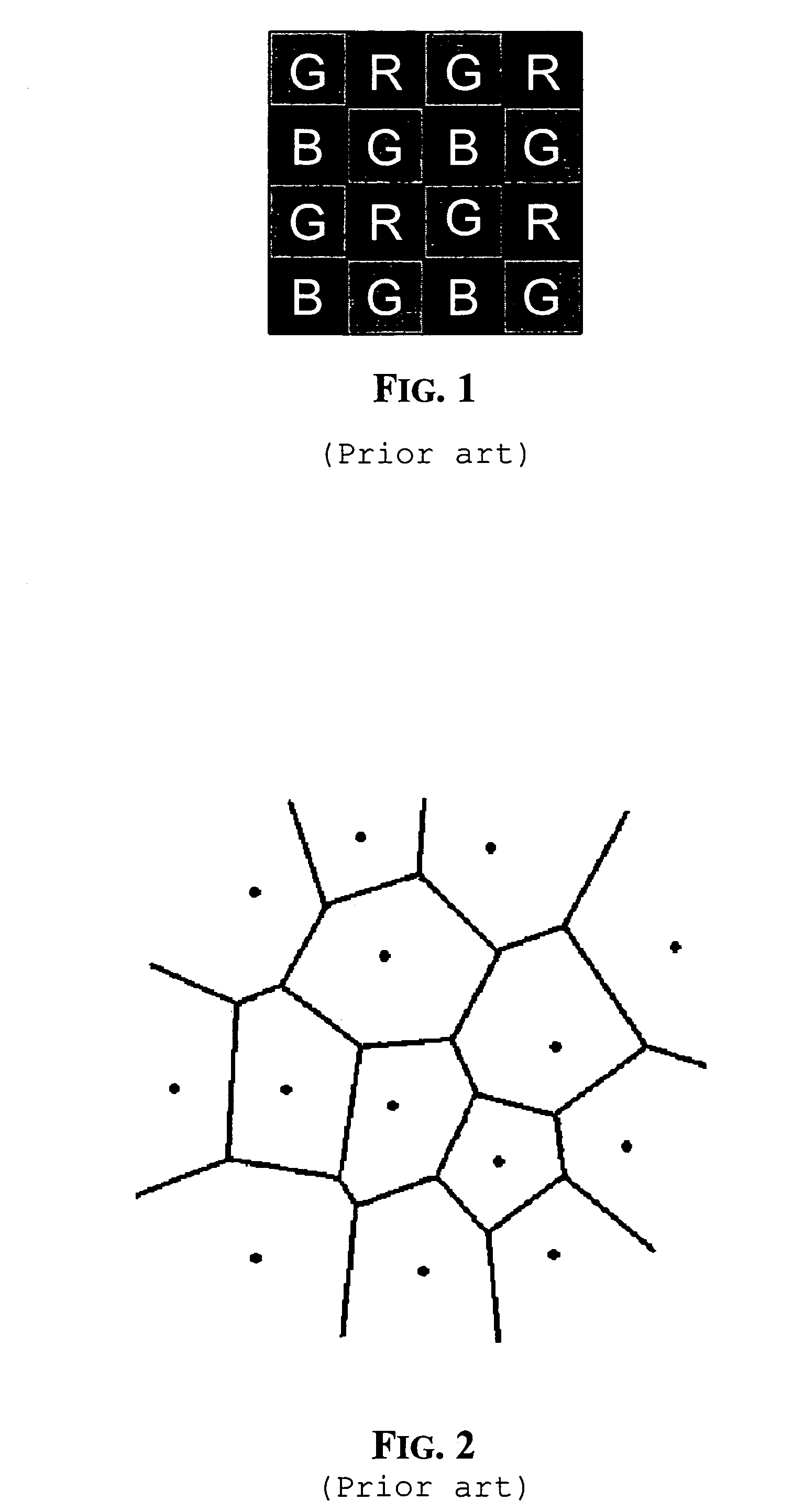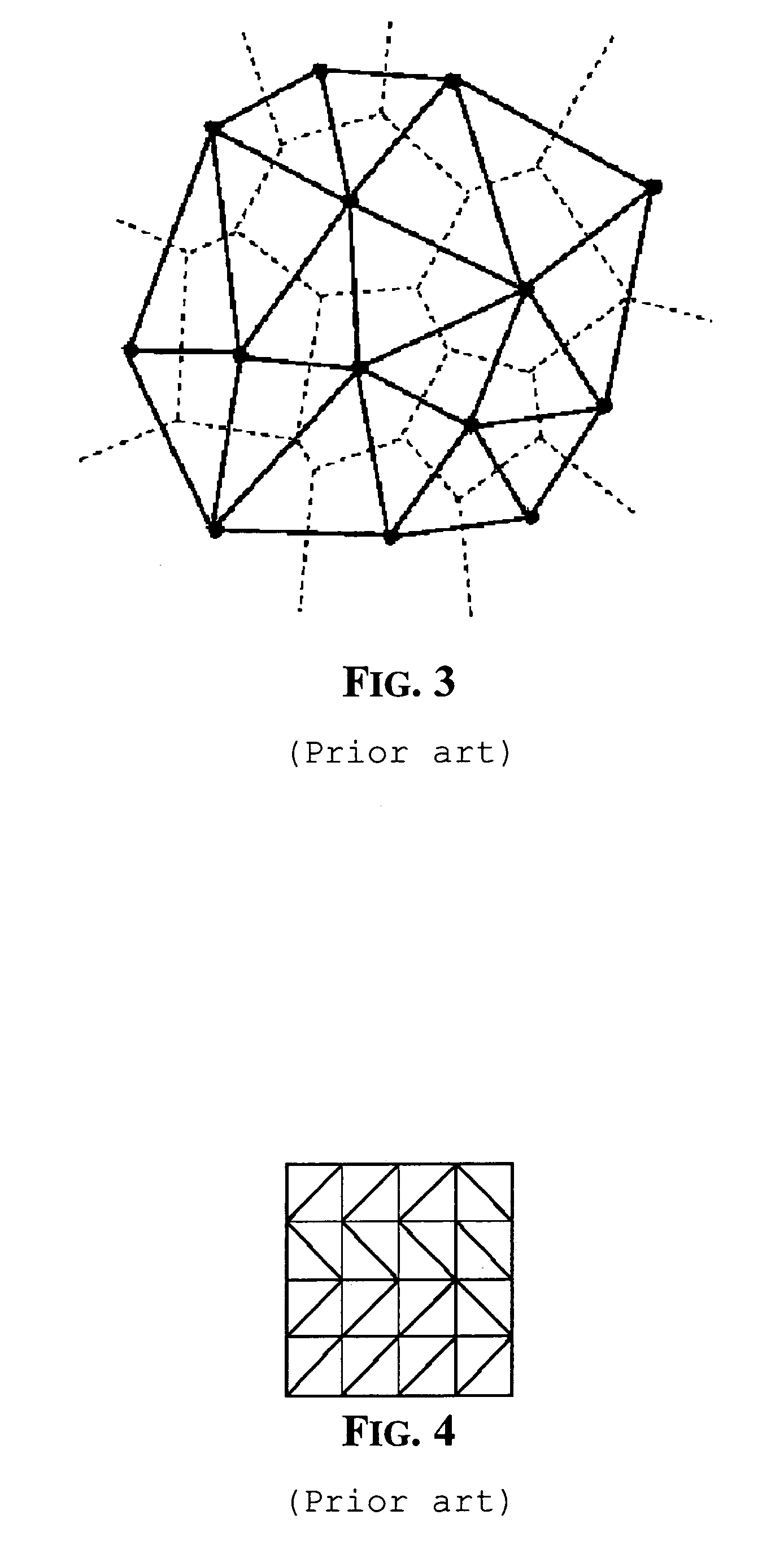Color interpolation using data dependent triangulation
a color interpolation and data technology, applied in the field of image data processing techniques, can solve the problems of not considering known techniques, not producing satisfactory color rendering in interpolated images, and using more sophisticated techniques, and achieve the effect of effectively eliminating color artifacts and being easy to implemen
- Summary
- Abstract
- Description
- Claims
- Application Information
AI Technical Summary
Benefits of technology
Problems solved by technology
Method used
Image
Examples
Embodiment Construction
[0071]The color interpolation method of this invention will be described by way of an example when considering the interpolation of a Bayer pattern image data as acquired by a digital color sensor. Naturally, the method is equally applicable to any other different scheme of acquisition using different filters, for example, for discriminating among complementary colors instead of primary colors.
[0072]FIG. 9 shows the flow scheme of the whole data dependent triangulation color interpolation according to the method of this invention, including also the optional anti-aliasing processing step following the interpolation step. FIG. 10 illustrates in detail the operations performed in the step Data Dependent Triangulation shown in FIG. 9, while FIG. 11 illustrates by way of an example an embodiment of the method of the invention.
[0073]By referring to the flow chart of FIG. 9, starting from the Bayer Pattern Data, three channels arrays are constructed, as shown in FIG. 12. The R, G and B pi...
PUM
 Login to View More
Login to View More Abstract
Description
Claims
Application Information
 Login to View More
Login to View More - R&D
- Intellectual Property
- Life Sciences
- Materials
- Tech Scout
- Unparalleled Data Quality
- Higher Quality Content
- 60% Fewer Hallucinations
Browse by: Latest US Patents, China's latest patents, Technical Efficacy Thesaurus, Application Domain, Technology Topic, Popular Technical Reports.
© 2025 PatSnap. All rights reserved.Legal|Privacy policy|Modern Slavery Act Transparency Statement|Sitemap|About US| Contact US: help@patsnap.com



